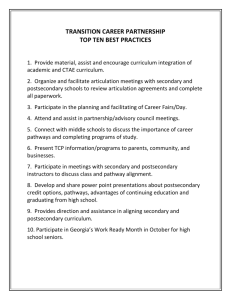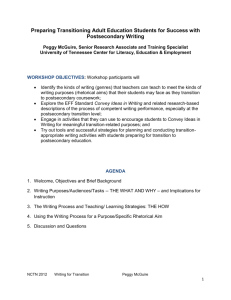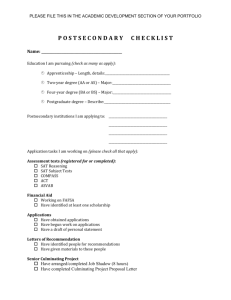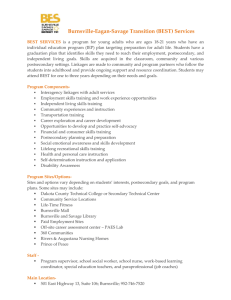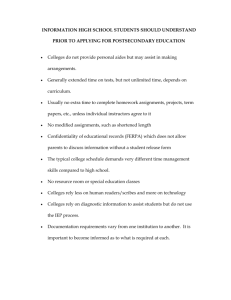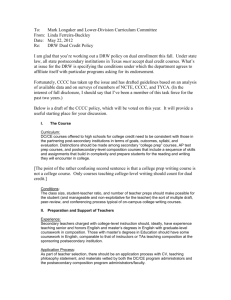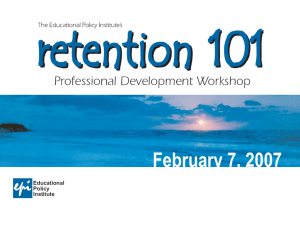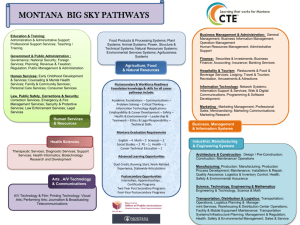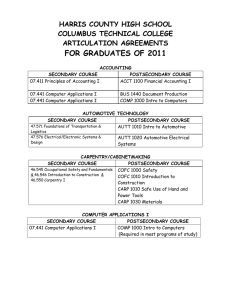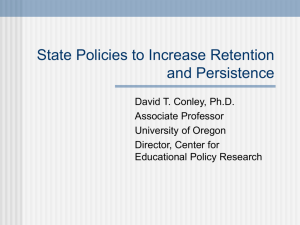DRAFT: Goals and Objectives Chart
advertisement
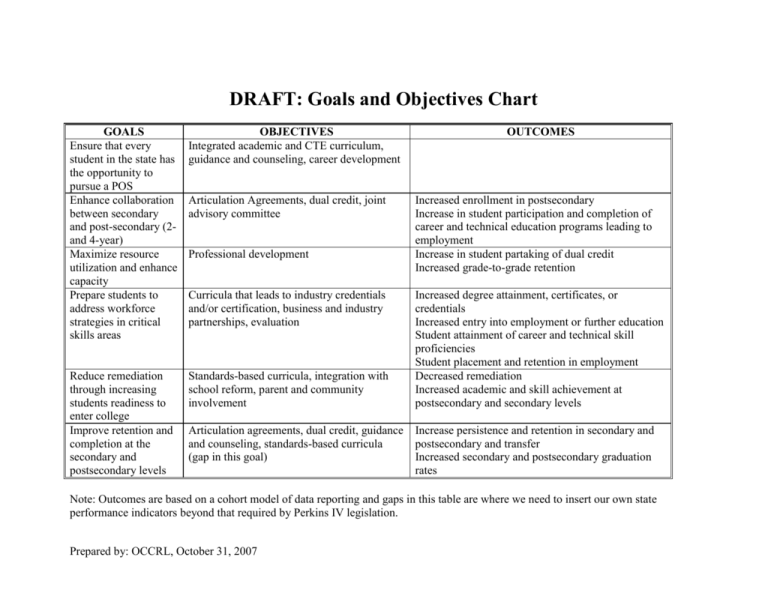
DRAFT: Goals and Objectives Chart GOALS Ensure that every student in the state has the opportunity to pursue a POS Enhance collaboration between secondary and post-secondary (2and 4-year) Maximize resource utilization and enhance capacity Prepare students to address workforce strategies in critical skills areas OBJECTIVES Integrated academic and CTE curriculum, guidance and counseling, career development Reduce remediation through increasing students readiness to enter college Improve retention and completion at the secondary and postsecondary levels Standards-based curricula, integration with school reform, parent and community involvement Articulation Agreements, dual credit, joint advisory committee Professional development Curricula that leads to industry credentials and/or certification, business and industry partnerships, evaluation Articulation agreements, dual credit, guidance and counseling, standards-based curricula (gap in this goal) OUTCOMES Increased enrollment in postsecondary Increase in student participation and completion of career and technical education programs leading to employment Increase in student partaking of dual credit Increased grade-to-grade retention Increased degree attainment, certificates, or credentials Increased entry into employment or further education Student attainment of career and technical skill proficiencies Student placement and retention in employment Decreased remediation Increased academic and skill achievement at postsecondary and secondary levels Increase persistence and retention in secondary and postsecondary and transfer Increased secondary and postsecondary graduation rates Note: Outcomes are based on a cohort model of data reporting and gaps in this table are where we need to insert our own state performance indicators beyond that required by Perkins IV legislation. Prepared by: OCCRL, October 31, 2007
